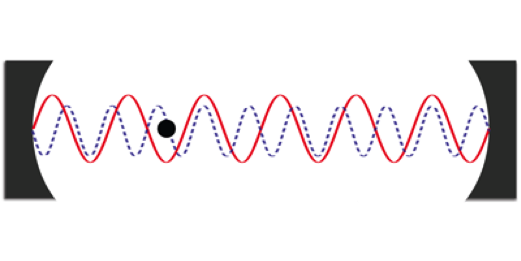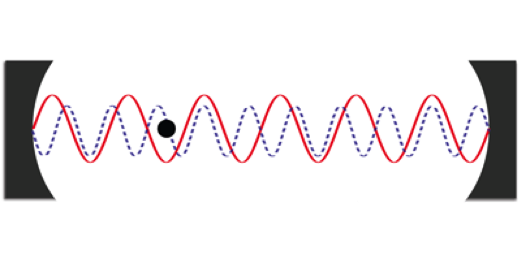Bouncing in a Spacetime Ripple
Everything tells us that moving masses should emit gravitational waves, but despite strong indirect evidence, there have been no direct detections. Large international collaborations are now using highly sensitive laser interferometers to look for gravity waves, requiring heroic measures to reduce noise and raise sensitivity. These detectors, however, are optimized for wave frequencies below kilohertz, causing them to miss potentially important events. In a paper in Physical Review Letters, Asimina Arvanitaki at Stanford University, California, and Andrew Geraci at the University of Nevada in Reno propose using microparticles trapped in an optical cavity as a new kind of high-frequency gravitational wave detector.
The authors consider the theoretical possibility of using a small sphere or disk suspended by radiation forces to detect gravitational waves. They propose trapping this tiny particle in a standing wave produced by an optical cavity and reducing its motion to a minimum with laser cooling. A passing gravitational wave would then produce a small ripple in spacetime causing a change in mirror spacing, shifting the location where the particle is trapped. The altered position of the particle is detected using light reflected from the cavity. For a -micron particle in a -meter-long cavity, Arvanitaki and Geraci estimate that they can exceed the sensitivity of the larger gravitational wave observatories for wave frequencies around kilohertz.
In their paper, the authors frankly acknowledge that few gravitational wave sources are expected to exist at this frequency, but Arvanitaki and Geraci do consider one exotic possibility. Theoretically predicted particles called axions might form a cloud around a black hole, and these in turn might annihilate to produce gravitons that create gravitational waves at the right frequency for detection by levitating microspheres. – David Voss





